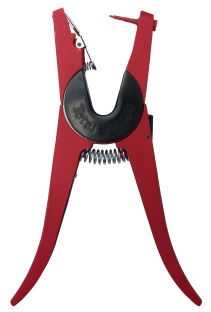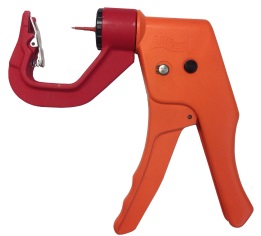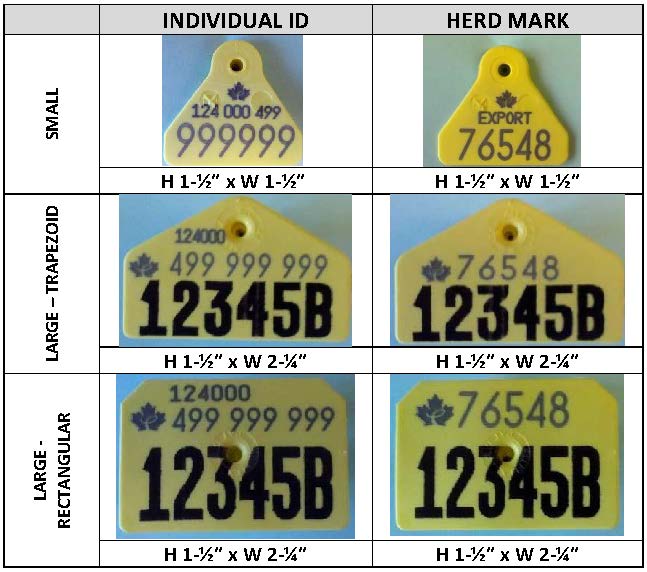Ear Tags
How to purchase
Orders can be placed by:
- Logging into your PigTRACE account (mobile app or web browser)
- Phone: 1-866-300-1825
- Email: PigTRACEvm@cpc-ccp.com
- Contacting your provincial pork organization
PigTRACE ear tags are custom-printed products. Orders are typically delivered within 2-3 weeks of payment. Payment is accepted by e-transfer, EFT, cheque, and credit card.
Your order shipping status can be tracked by logging into your PigTRACE account. Once the order is shipped, you can also view the Canada Post tracking status.
Small quantities and rush orders are available through many provincial pork offices, which maintain inventory for urgent orders and orders of fewer than 25 ear tags. Contact your provincial pork office for more details.
PigTRACE Ear Tag Price Increase Effective December 15, 2023
With increased foreign animal disease risk putting traceability at the centre of preparedness and zoning activities, PigTRACE is more important than ever.
CPC incurred increased costs for the manufacture and distribution of PigTRACE ear tags through 2023. Unfortunately, these costs have become unsustainable and must be passed on to customers. CPC applied a 10% pricing increase to PigTRACE ear tags and accessories on December 15, 2023. The new pricing is listed below. For future reference, you can download the most recent price list from the sidebar.
Non-Electronic Ear Tags
Small Tags
25-275 Tags: $1.33 each
300-475 Tags: $1.11 each
500-1,975 Tags: $0.99 each
2000+ Tags: $0.94 each
Large Tags
25-275 Tags: $1.61 each
300-475 Tags: $1.38 each
500-1,975 Tags: $1.24 each
2000+ Tags: $1.19 each
Electronic Ear Tags (Large)
FDX-RFID Tags
25-275 Tags: $3.55 each
300-475 Tags: $2.98 each
500-1,975 Tags: $2.66 each
2000+ Tags: $2.55 each
HDX-RFID Tags
25-275 Tags: $4.41 each
300-475 Tags: $3.82 each
500-1,975 Tags: $3.47 each
2000+ Tags: $3.32 each
Note
Order quantities are in multiples of 25 tags. Minimum order of 25 tags. Prices include shipping. Applicable taxes are extra.
Approved Ear Tags
Ear tags can be purchased by calling 1-866-300-1825 or provincial pork organizations. Rectangle and trapezoid ear tags are available in white, pink and yellow. Small piglet ear tags and electronic ear tags (FDX-RFID and HDX-RFID) are available in yellow only.
More information on the tags, including photos, is provided further down the page.
Tag Application
It is important to make sure you’re using the correct tag applicator for these tags. These are Allflex tags, and use the following Allflex tag applicators:
- Red pliers will work with all forms of tags, including electronic, RFID tags (See Image 1)
- Orange handled Retrac-o-Matic will work with our large, visual tag only (i.e., will not work with small piglet tags or electronic RFID tags) (See Image 2)
Click the second link in the sidebar to learn how to properly apply ear tags.
More About the Tags
PigTRACE uses two forms of official identification for identifying pigs:
- Individual identification: a 15-digit number unique to each pig.
- Herd mark (formally called the slap tattoo number): a 5-character number that is unique to a premises (assigned by your provincial pork organization). This may be applied to pigs as:
- a shoulder slap tattoo
- an approved ear tag or
- ear tattoo (only in the case of exported weanling and feeder pigs).
Additional numbers of your choice can be printed below the official identification number for barn management purposes (e.g., 12345B in the image below). It is recommended that you review PigTRACE Tag Options prior to ordering, as we do not offer refunds or returns.
Tattooing for Traceablility
REMEMBER
Proper Tattooing is key to effective traceability and helps to ensure you get paid properly for your hogs!
Step 1: Material Preparation
- Use permanent ink accredited by CFIA (preferably black)
- Keep your hammer in good condition with clean numbers
- Never clean equipment with alcohol or gas
- Always replace broken or bent numbers
Step 2: The Tattoo
- Use the number(s) that are officially assigned to the premises where hogs are shipped from (contact your provincial pork organization to obtain official numbers)
- Ensure that the numbers are in the correct order
- Aim for the shoulder
- Dip the hammer in the ink often
Click the last link in the sidebar to learn how to properly apply a shoulder slap tattoo
Step 3: Monitoring
- Train and follow up with employees
Be sure to report all information to www.PigTRACE.ca
Requirements – Animal Identification
The following lists animal identification requirements for difference facilities and animal types:
Farm–to–farm movement (within Canada)
Except for sows and boars, pigs moved from one farm to another do not need to be identified. Documented movement information (e.g., a manifest) must accompany the shipment. There is no requirement to report movements within premises (i.e., barn-to-barn movements on the same property).
Pigs going to slaughter
Herd mark shoulder slap tattoo or an approved ear tag must be applied to pigs going to a Canadian slaughter facility, either directly or via an assembly yard.
NOTE
Assembly yards do not need to report identification numbers unless they are applied to pigs at their facility.
Culled breeding swine (sows/boars going to slaughter)
An approved tag or herd mark shoulder slap tattoo must be applied to culls before leaving the farm
NOTE
Assembly yards do not need to report identification numbers unless they are applied to pigs at their facility.
Bred Pigs (sows/boars sent anywhere other than slaughter)
An individual identification ear tag must be applied to a pig used for breeding when leaving the site where they were bred (*Gilts do not need to be identified). Bred pigs are defined as pigs who have mated, either naturally or artificially, or which provided semen, ova or embryos for reproduction.
Export movements
Exported pigs must bear an approved identifier upon departure from Canada. This could include a herd mark (tag or tattoo) or individual identification ear tag. Check with your export official to verify acceptable export protocol.
Import movements
Imported pigs must have an approved identifier upon arrival into Canada. In most cases this will be an individual identification ear tag, but could include other foreign identifiers if they are approved by the Canadian government.
Pigs sent to fairs or other locations not specified here
An individual identification ear tag must be applied to a pig destined for auction, fair, artificial insemination centre, or any other destination types not specified on this website.
NOTE
Assembly yards do not need to report identification numbers unless they are applied to pigs at their facility.
Pigs at an assembly yard for more than 96 hours
An individual identification ear tag must be applied to, or present on, any pig that remains at an assembly yard (site used for the purpose of collecting pigs) longer than ninety-six (96) hours.
NOTE
Assembly yards do not need to report identification numbers unless they are applied to pigs at their facility.
Pigs at an assembly yard sent anywhere other than slaughter
An individual identification ear tag must be applied to, or present on, any pig that is shipped fom an assembly yard to anywhere other than an abattoir.
NOTE
Assembly yards do not need to report identification numbers unless they are applied to pigs at their facility.
Deadstock removal
Deadstock do not need to be identified when shipped for disposal.
Lost Tags & Illegal Tag Application
If a pig loses an approved tag during transportation, the person who owns or has the possession, care or control of the animal shall apply a new approved tag to it at its destination, unless the pig is sent to an abattoir for slaughter. It is illegal to identify pigs with tags approved for other species, and vice-versa.
note
Documented movement information (e.g. a manifest) must accompany all shipments/movements described above.


